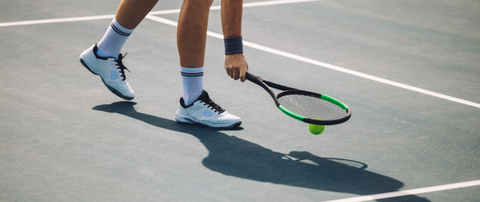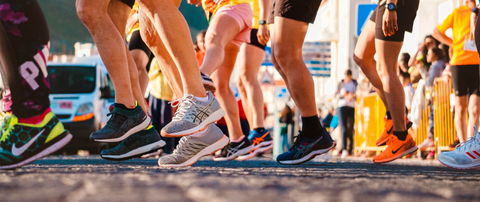BEST INSOLES FOR TENNIS

Hello, my name is David Herr and I’ve had a tennis racquet in my hand since I was four years old. I also played hockey and soccer as a kid and, later in life, picked up the game of golf, a sport that has some of the most unnatural body movements of any you can play. In my youth, I won the Kansas 5A State Championship and played D-1 at the University of Tulsa. Currently, I play two to three times a week on both hard and clay courts. Playing this much tennis, this often, I was really looking for tennis insoles that could provide my feet relief and improve my game.

KEEPING UP WITH THE DEMANDS
Now that I am in my 40s, I’ve started to pay more attention to my physical fitness, what my body may be trying to tell me, and I do a lot of research to find new products or advice that can help me with my conditioning. Over the past decade, tennis has evolved into a sport of high physical demand. Children and women can now serve the ball over 100 miles per hour and players hit groundstrokes with more topspin and with much greater pace. Because of these demands, I’m looking for anything that will help me keep my game at a high level even as I’m getting older.
TENNIS INJURIES ON THE RISE
Tennis is one of the few sports that people can play throughout their lives. Today, more and more seniors are active tennis players. Along with this has come an increase in lower extremity injuries. Tennis players are very similar to most weekend warriors in other sports such as running, cross-training, racquetball, and basketball. It is very difficult to slow them down even when they become injured.
Tennis involves a lot of foot work. Foot and ankle injuries occur from the continuous side-to-side and quick stopping and starting motions the sport requires. The type of playing surface is also a factor with hard courts being much less forgiving than clay courts. According to the American College of Foot and Ankle Surgeons, “overuse and excessive training can lead to heel pain, plantar fasciitis, Achilles tendonitis, ankle sprains and stress fractures.” Since adding golf to my repertoire, I have suffered from lower back issues, tightness, and intermittent pain. I have used a chiropractor at times to relieve and alleviate this pain. In the past few years I have been using a personal trainer to help strengthen my lower back muscles and glutes to provide greater support, strength and flexibility to my back and core. The American Academy of Podiatric Sports Medicine advises, “above all, listen to your body. Persistent minor aches and pains are not normal and will become aggravated if ignored or neglected. Proper care of the whole body, and especially the foot and ankle, will make tennis and other racquet sports a healthy part of life for people of all ages.”
PAY ATTENTION TO YOUR FEET
Recently, I’ve been paying much more attention to my feet, how they feel on the court and how they feel off the court or the next day. I had never used orthotics or shoe insoles before and always thought my foot discomfort was just a part of getting older, but figured it was worth giving them a try. So, I started trying different over the counter products that I found either on-line or at my neighborhood pharmacy. None of them seemed to make much difference and most of them didn’t hold up very well. I even tried one of those new 3D printed insoles, but they were very rigid, uncomfortable, and unforgiving on the court.
Then I came across a product called SelectFlex. Immediately after putting them in my shoes I could feel a difference. These insoles provide great arch support, and foot and ankle alignment I’d never experienced before. Without a doubt, SelectFlex has given me an edge with painless play and increased performance. The relief I now feel in my back and all down my legs is incredible. I can more aggressively push off from side to side, I feel lighter on the court and I’m getting to balls I never used to be able to get to. Today, I won’t step on the court without having them in my shoes.
I could not have found these insoles at a better time in my life, except maybe to have found them 25 years ago! I have been so impressed with them that I bought all my tennis buddies each a set for Christmas.
My advice is to listen to what your body may be trying to tell you. Don’t ignore aches and pains that never go away. And if you love the game of tennis, or any other sport for that matter, that requires a lot of movement, pay attention to your feet. They are the foundation of your entire body and they deserve proper support and alignment in order to keep you healthy and active doing the things you love most.
Don't ignore foot pain any longer. Learn more about what SelectFlex can do for your game.






